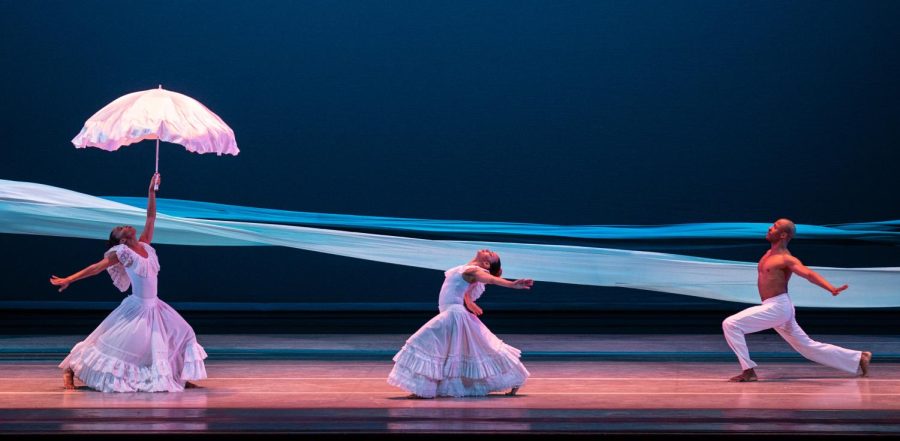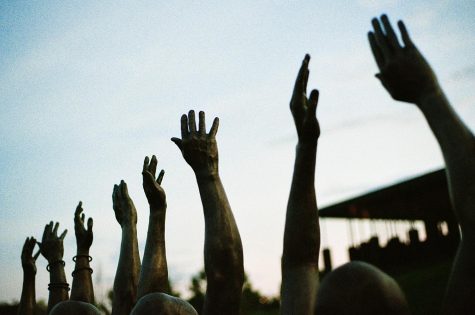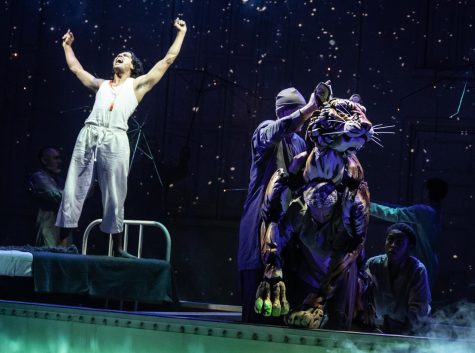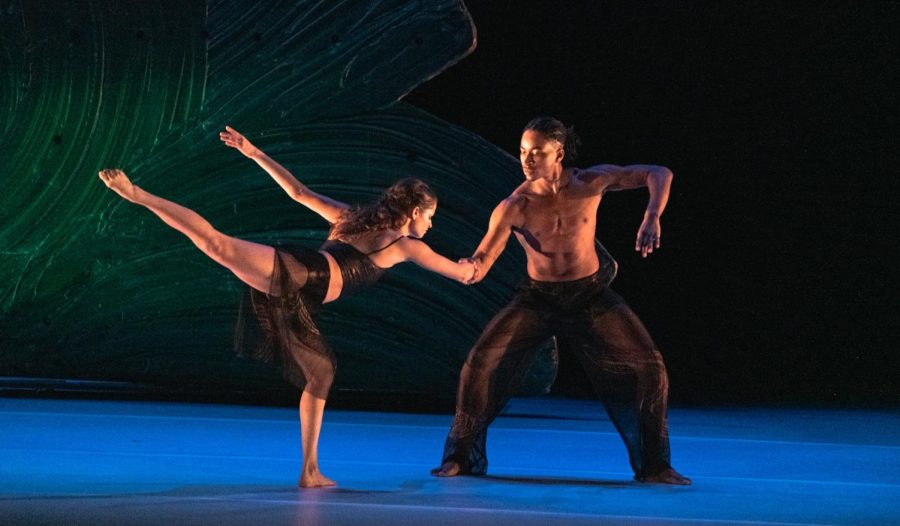Climate March generates energy to change the planet
Nearly 400,000 people take to the streets of New York to make a loud statement for world leaders
November 7, 2014
Global warming, rising sea levels, greenhouse gases, fossil fuels. You’ve probably heard all of these phrases in connection with climate change, and, although they seem important, it is hard to link them to our everyday lives. We hear statistics about how the effects of climate change are everywhere, but they rarely have a direct impact on us.
However, there are, in fact, many actions you can take to make a difference for our planet, and it is not too late to turn around the pattern of accelerated climate change that our society has been perpetuating.
On Sunday, Sept. 21, nearly 400,000 people who all believed in doing just that turned out on the streets of New York City for the People’s Climate March, the largest event of its kind in history. The crowd included college and high school student groups, dance performance groups, the elderly, political activists, families with young children, and representatives of environmentalist organizations from all over the nation.
Smaller climate marches occurred in 161 other countries as well, including Brazil, Australia, and the United Kingdom, with an estimated total of 600,000 marchers making an enormous statement globally. All of these people marched with the hope of influencing United Nations world leaders meeting two days later in New York City to take action to stop global climate change and overconsumption of our world’s resources.
Early in the morning of the march, we piled into the small car of a family friend and drove down to New York. Word had traveled to us about the march through one of the many fliers that were handed out this past August in New York City. We were instantly intrigued by the idea of participating, not only because it would be empowering to be a part of a march full of people who were passionate about the same cause, but also because it was predicted (and predicted accurately) to be the biggest climate march in history.
We parked in Queens and took public transportation to where the march was starting on Central Park West, arriving just in time. The streets were absolutely packed with people, some holding impressive homemade, handpainted signs or dressed in eccentric costumes. One golden retriever happily jogged around with a solar panel on its back. A woman holding a sign asking “Are you living in a bubble?” was dressed in what appeared to be an all white gas mask and suit.
The day was cloudy, but thankfully there was no rain to dampen the mood. We started moving around noon, and the energy of the march built as we passed Columbus Circle, Rockefeller Center, and even marched through Times Square. Marchers who had brought megaphones made up chants, which spread rapidly through the crowd. Cheers of “The people united will never be defeated” and “What do we want? Climate action! When do we want it? Now!” echoed against the walls of New York’s skyscrapers. We even started one ourselves: “Earth is our place, leave no trace!”
At 12:58 p.m., we saw other marchers in the distance raising their hands and could hear the dull, approaching roar of 400,000 people whispering “Shh!” at the same time. When the wave of sound reached us, we put our hands in the air, too, and suddenly everything was completely silent. The contrast to the chaotic noise that the march had been making only moments ago was incredible to witness in person.
The moment of silence was a chance to be serious and remember that although the march was incredibly fun, we were marching for a grave reason.
Roughly two minutes later, around 1 p.m., we could again hear a crescendo of energy building from the front of the march, getting closer and closer, until it reached where we stood and everyone around us burst out shouting for joy and making as much noise as possible. The moment of silence and the increase of energy afterward was one of the most enjoyable parts of being in the march, because it gave everyone an immense sense of unity and togetherness.
After many blocks and roughly four hours, we reached the end of the march on 11th Avenue where a huge festival took place. We signed petitions, ate free vegan food, and listened to live environmentalist rap music. A huge interactive art structure had been created, intended for people to write on a ribbon something they didn’t want to lose to climate change, tie it onto the structure, then find someone else’s ribbon that they could relate to and take home.
Many organizations used this festival as a chance to advertise, groups present included veganism, carbon tax, renewable energy, beekeeping, and anti-fracking advocates.
Besides being an incredible and inspiring event in itself, the march influenced world leaders to listen to the voice of the people. During the United Nations meeting, President Obama declared, “Our citizens keep marching, we cannot pretend we do not hear them. We have to answer the call.”
During and since the meeting, the President has announced a new executive order and other government initiatives to combat climate change.
A similar summit occurred in 2009 in Copenhagen with less promising results, but this time around world leaders have committed billions of dollars to climate change reversal programs. Even the private sector has stepped forward, with various major companies pledging some $200 billion in assets toward greener investment over the next 15 months.
However, the purpose of this meeting was only to create a draft of an agreement which leaders plan to ratify in December 2015 in Paris, and none of the statements made at such United Nations meetings are binding. This means that now is the time to keep the public pressure up and make sure these leaders stick to their promises.
The chief of the US Navy’s Pacific Command, Admiral Samuel Locklear, has stated that climate change is currently the single greatest security threat to the United States. Estimates suggest that without drastic action there will be at least 200 million climate refugees by 2050, meaning people who have been displaced either because the resources where they used to live were used up or because their home will be underwater due to rising sea levels. It is truly mind boggling.
Statistics like these can make us feel scared, guilty, or depressed. It’s hard to really think about what the effects could be, so we often turn a blind eye for one reason one another. Seeing all the hundreds of thousands of environmentalists, young and old, was without a doubt empowering, but at points it felt overwhelming.
The posters lamenting what the effects of climate change have done so far and will do in the future seemed like (or at least we hoped were) exaggerations. One memorable sign said, “It won’t be an exaggeration when you’re drowning.”
Messages like this made us feel as if the movement might be virtually hopeless, and whatever efforts we could put into it would be useless because widespread destruction is inevitable at this point.
Nevertheless, seeing so many people protesting and seeing all the empowering media about the event afterward gave us more motivation. We now feel like if we do everything we can to help the planet, and get as many people as we can involved with the movement we can make a difference.
At times, we will have to go out of our way and embarrass ourselves in order to truly give the movement our all, for example, reminding friends and family to recycle, compost, or conserve gasoline. Although when you really think about it, there’s nothing embarrassing about wanting to live a conscience life and protect the amazing planet we live on.
–Nov. 6, 2014–




















